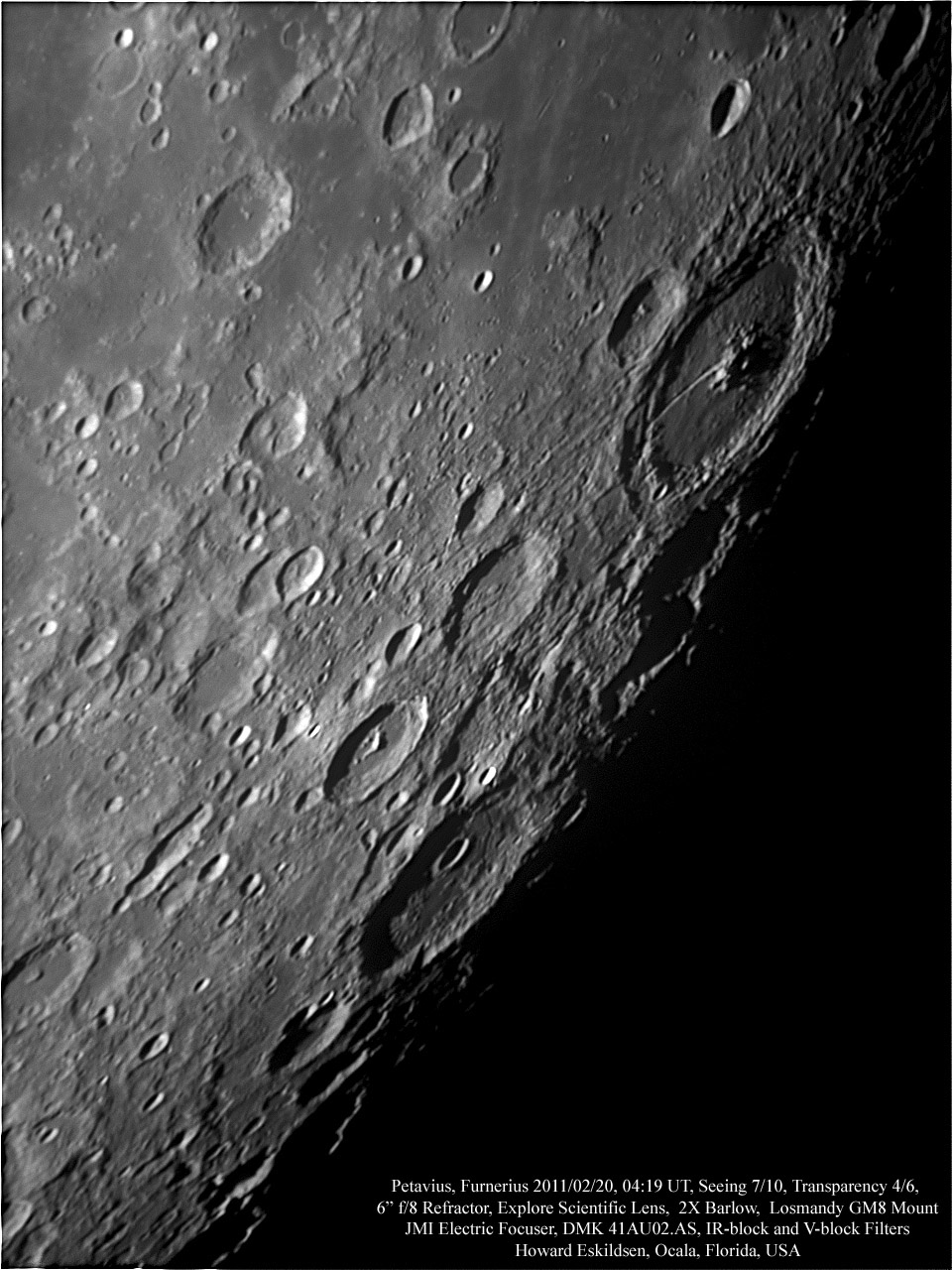August 13, 2020
Backyard Moon
Originally published March 2, 2011

image by Howard Eskildsen
We are awash now in super high resolution spacecraft images but our most common view of the Moon is from our backyards and gardens. Howard's image captures a view more like we can see. Petavius is the feature that grabs our attentions because its giant trench is so unlike any other lunar crater. And it is one of the few craters in this battered region that retains part of its ejecta blanket - radial ridges of debris. To the south is an older large crater, Furnerius, that is odd because its floor contains a small patch of mare lava and a rille. Why are they here, so far from a basin? To the left of Furnerius is the feature I've called the Slot - three barely overlapping craters with no common walls. They must have formed simultaneously, but their orientation doesn't align with any basin so they are probably not basin secondaries. And at top right is an innocuous looking crater with a bright interior. This is Petavius B, but maybe it should be Petavius V because of the vee-shape of its ray pattern, just hinted at with this low lighting. V, or B, was formed by an oblique impact with the projectile coming from the north, and ejecta splashed southward toward Petavius.
Chuck Wood
Related Links
Rükl plate 59
Yesterday's LPOD: Ray-Streaked Mare
Tomorrow's LPOD: No Longer Ageless
COMMENTS?
Register, Log in, and join in the comments.



